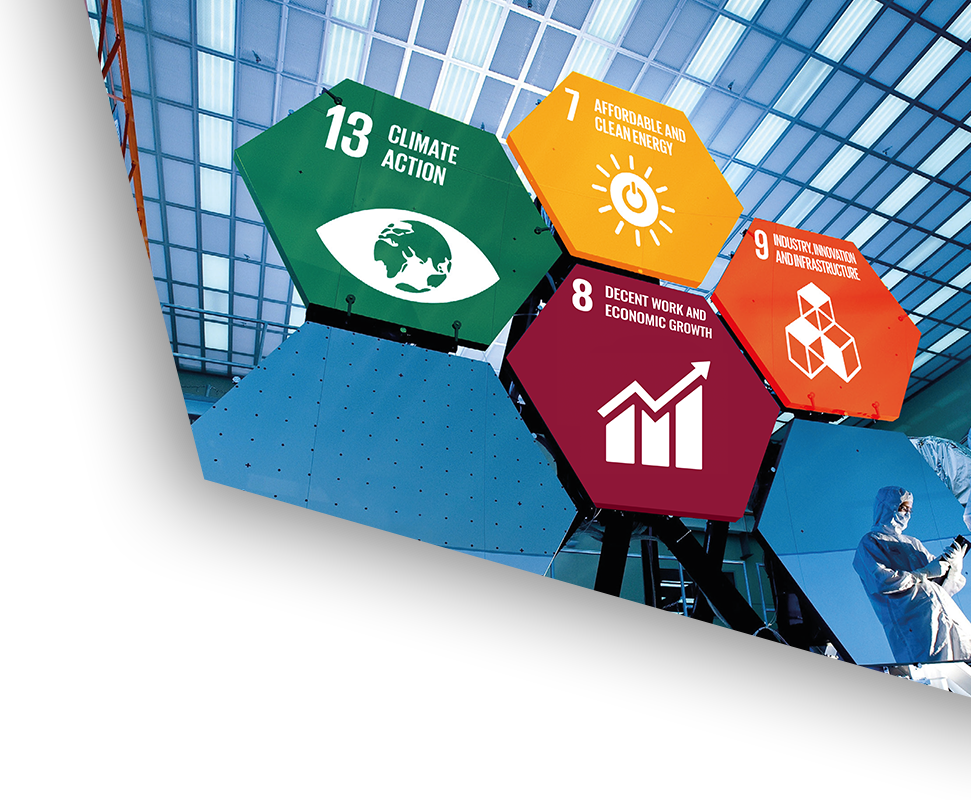
The core of our business is to develop cost-effective technologies that reduce CO2 emissions and transform harmful compounds into valuable products. We believe that our innovative and sustainable technology will help reduce the impact of human activities on global climate change for the benefit of all stakeholders. Our commitment to making the world a cleaner place are contributing to the UN’s 17 Sustainable Development Goals.
Carbon capture and storage (CCS) is crucial for achieving the world’s climate goal of net-zero CO2 emissions by 2055. Along with further development of green energy sources, such as windmills and solar power, traditional sources of energy will still be in demand. Accordingly, a special focus on reducing CO2 emission from exhaust gas, as well as using and/or storing CO2 is required.
CCS plays an important role in achieving climate objectives, as the CCS technology contributes to reducing emissions that are difficult to reduce by other means.
In ESTECH we believe in the reutilization of CO2 to minimize the consumption of fossil fuels.
Of the 17 Sustainable Development Goals, we believe our technology will have the largest impact on the following goals:
To achieve the world’s climate goal of zero CO2 emissions by 2050 and to reduce CO2 emissions, Carbon Capture & Storage (CCS) technologies will play a key role.
Carbon Capture & Storage technologies have significant potential to help achieve the UN’s sustainability goals. While the focus is on scaling up the technologies and reducing price, PtX and green fuels are becoming viable solutions for reducing emissions.
At ESTECH we are at the forefront of technology within carbon capture and the production of green hydrogen. Our unique technology combines carbon capture and hydrogen production, thus enabling a very cost-efficient reduction of CO2.
According to the UN Sustainable Development Goals, Denmark is obligated to store up to 40 mill. tons CO2 a year. This is possible under ground and requires enormous investments in infrastructure, piping, wells, pumps, and land-based facilities. But if we use CO2 in the production of new fuels, the need to store CO2 under ground will diminish. The mission is to capture this CO2 and store or reutilize it commercially.
Today, considerable amounts of greenhouse gasses are released into the atmosphere. In general we produce 3 kilograms CO2 for every 1 litre oil we burn – the definition of the carbon footprint of oil (heating).